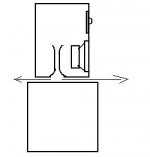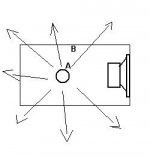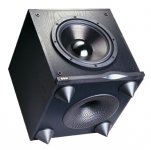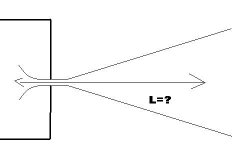Here is the idea,
I want to build a down firing port that would open on the bottom of the cabinet. This way, I could adjust the effective area of the port by adjusting the gap between the cabinet and the stand below.
I think this have been done before maybe by Naim if I am right.
What do you think!
F
I want to build a down firing port that would open on the bottom of the cabinet. This way, I could adjust the effective area of the port by adjusting the gap between the cabinet and the stand below.
I think this have been done before maybe by Naim if I am right.
What do you think!
F
Attachments
gary f said:Here is the idea,
I want to build a down firing port that would open on the bottom of the cabinet. This way, I could adjust the effective area of the port by adjusting the gap between the cabinet and the stand below.
I think this have been done before maybe by Naim if I am right.
What do you think!
F
Polk uses what appears to be something like that for a built-in powered subwoofer. They add a pyramid thingy with curved sides that points up at the port and call it a "Power Port (tm)."
http://www.polkaudio.com/home/technology/pwrport.php?category=3&speaker=164
It's not adjustable though.
"This technology provides performance that vastly exceeds any conventionally ported speakers in the same size and price class."
I've been reading a lot about loudspeakers and such lately. Oddly, they ALL vastly exceed the others.
I've been reading a lot about loudspeakers and such lately. Oddly, they ALL vastly exceed the others.
Yeah but mine will exceed EVERYTHING else of course....
The idea seems good for another reason than adjustability (see schematic)
The box act like a big flare, just when the air exit the port, there is a limited area to pass which is the circumference of the port multiplied by the height of the gap (point A). But after a while (point B) the air have more space so the speed goes down, like in a flare.
F
Attachments
And Yamaha do this with their bass drivers on some of their subs!!
They claim positioning is [somehow] less critical because of the smooth flow of bass or something like that...
Go here and click on 'speakers' to see quite a few!
http://www.yamaha.co.jp/english/product/av/index.html
I should add I've not heard any of these subs, though I think we sell one at the shop I sometimes work at...
-Simon
ps. those golfball ports are cool, every speaker I've heard that uses them had good or excellent bass
They claim positioning is [somehow] less critical because of the smooth flow of bass or something like that...
Go here and click on 'speakers' to see quite a few!
http://www.yamaha.co.jp/english/product/av/index.html
I should add I've not heard any of these subs, though I think we sell one at the shop I sometimes work at...
-Simon
ps. those golfball ports are cool, every speaker I've heard that uses them had good or excellent bass
>I want to build a down firing port that would open on the bottom of the cabinet. This way, I could adjust the effective area of the port by adjusting the gap between the cabinet and the stand below.
>I think this have been done before maybe by Naim if I am right.
>What do you think!
====
It's been around since almost the beginning and very effective when properly implemented. It's best used on a cab tuned too low, then load the vent to 'pump it up'. As you surmised, since this raises the box system's efficiency, it lowers its vent mach, like flaring does.
As you surmised, since this raises the box system's efficiency, it lowers its vent mach, like flaring does.
====
>those golfball ports are cool, every speaker I've heard that uses them had good or excellent bass
====
Indeed they do, they act as vortex generators to increase boundary layer 'stiction', slowing the vent speed even further than normal flaring does.
GM
>I think this have been done before maybe by Naim if I am right.
>What do you think!
====
It's been around since almost the beginning and very effective when properly implemented. It's best used on a cab tuned too low, then load the vent to 'pump it up'.
====
>those golfball ports are cool, every speaker I've heard that uses them had good or excellent bass
====
Indeed they do, they act as vortex generators to increase boundary layer 'stiction', slowing the vent speed even further than normal flaring does.
GM
Without reading many of your other posts, I would have taken that sentence as a joke!!! You're the manIndeed they do, they act as vortex generators to increase boundary layer 'stiction', slowing the vent speed even further than normal flaring does.
I've been really blown away by the new B&W 703 speakers. The bass is simply phenominal - tight, controlled, tuneful, extended, with so much punch - truly excellent! Driven with a modestly priced Rotel pre/power combo you really don't need much cranking to get punched in the stomach, but in a nice way! I could talk about these speakers all day, suberb imaging, amazing detail, not harsh at all....
-Simon
I believe slot ports are calculated like any other but use a bit different end correction factor and the effective length is measured down the physical middle of the duct, no matter how it's folded.
But I don't think this setup would behave like a normal slot port. Wouldn't the top of the cabinet you place this on act like a wall of the port, changing the effective length and tuning? I've no idea how you could predict the results.
It would be interesting to measure the output with the box upside down, compared to the normal orientation.
cheers
But I don't think this setup would behave like a normal slot port. Wouldn't the top of the cabinet you place this on act like a wall of the port, changing the effective length and tuning? I've no idea how you could predict the results.
It would be interesting to measure the output with the box upside down, compared to the normal orientation.
cheers
But I don't think this setup would behave like a normal slot port. Wouldn't the top of the cabinet you place this on act like a wall of the port, changing the effective length and tuning? I've no idea how you could predict the results.
That's the problem I have. The cabinet will act like wall, making the port longer. But it's tough to evaluate precisely. Also, it's like having a big flare after the port, like the in drawing I attached, what is the effective lenght of that port??
That's why I will tune it by ear I think, by adjusting the gap between the speaker and the stand. I will make a slighly bigger port than necessary and reduce the effective area by adjusting the gap. I am now building my speakers (slowly) , I will post the results later.
F
Attachments
Hmm, so adding a flare to a port will simultaneously lower the tuning and raise the efficiency of the port. Are the two effects corrolative? Also, you might want to be careful as lowering the port tuning will effect the excursion capabilities of your driver, being that the port "unloads" the driver at resonance, greatly relieving excursion requrements placed on the driver per signal level at resonance. Shifting this point of excursion relief lower in frequency also makes the driver "work" harder immidiately above the port frequency. Might want to keep an eye on it....
Hmm, so adding a flare to a port will simultaneously lower the tuning and raise the efficiency of the port. Are the two effects corrolative?
I don't think that adding a flare change the tunig frequency if the effective lenght is the same. The major effect is making the flow of air smoother with less noise.
It is true that the excursion can be changed with the tuning frequency. The minimum excursion is at the resonant Freq of the box. If Fb is too low, the driver may distort... I will check it out!
Since I will use a 12cm woofer, excursion is definitely gonna be a problem..........
F
Flaring a vent raises its tuning frequency for a given length due to the larger end correction, i.e. it 'feels' like it's bigger than it really is, so the effective length must be increased to maintain the same Fb.
IOW, let's say a 3" diameter x 10" long vent tunes a cab to 40Hz, but at a high vent mach so you add a homemade flare that's 1.5" deep, so as a R-O-T you don't shorten the 10" pipe, instead attaching it to the flare to make a vent that's physically 11.5" long.
If you want to calculate it a bit more accurately, find the new effective diameter to calculate the total length.
GM
IOW, let's say a 3" diameter x 10" long vent tunes a cab to 40Hz, but at a high vent mach so you add a homemade flare that's 1.5" deep, so as a R-O-T you don't shorten the 10" pipe, instead attaching it to the flare to make a vent that's physically 11.5" long.
If you want to calculate it a bit more accurately, find the new effective diameter to calculate the total length.
GM
Supposing both ports are tuned to the same frequency, is there any difference in the "Q", i.e. how sharply or broadly each one tunes the box?GM said:Flaring a vent raises its tuning frequency for a given length due to the larger end correction, i.e. it 'feels' like it's bigger than it really is, so the effective length must be increased to maintain the same Fb.
I get the feeling the flared one would tune more broadly and maybe with less effect at the centre frequency because it's more effective coupling to the air courtesy of it being a horn of sorts allows the surrounding air to damp the port airflow to a greater degree than otherwise. I'd love to know the answer...
You can tune a pyramid at the port as i did it on an early down firing TQWT i desigined and built.All i did was make the height of the cab adjustable (threaded rods) and with a
pyramid shaped (flat sides) on the base and a square port at the bottom of the cab. I just raised and lowered the whole cab.It works but looks a little funky.
ron
pyramid shaped (flat sides) on the base and a square port at the bottom of the cab. I just raised and lowered the whole cab.It works but looks a little funky.
ron
True a round pyramid will perform better but i did not have access to a large wood lathe.As a forum bud of mine likes to state "sound is round".
I also found out that if the angle of the hole is the same as the angle of the pyramid you get a much better flow and a much smoother LF response.
ron
I also found out that if the angle of the hole is the same as the angle of the pyramid you get a much better flow and a much smoother LF response.
ron
>Supposing both ports are tuned to the same frequency, is there any difference in the "Q", i.e. how sharply or broadly each one tunes the box?
====
Yes.
====
>I get the feeling the flared one would tune more broadly and maybe with less effect at the centre frequency because it's more effective coupling to the air courtesy of it being a horn of sorts allows the surrounding air to damp the port airflow to a greater degree than otherwise. I'd love to know the answer...
====
Correct, it makes the vent more aperiodic (resistive), like adding a stretched piece of open weave material across the vent opening.
GM
====
Yes.
====
>I get the feeling the flared one would tune more broadly and maybe with less effect at the centre frequency because it's more effective coupling to the air courtesy of it being a horn of sorts allows the surrounding air to damp the port airflow to a greater degree than otherwise. I'd love to know the answer...
====
Correct, it makes the vent more aperiodic (resistive), like adding a stretched piece of open weave material across the vent opening.
GM
Correct, it makes the vent more aperiodic (resistive), like adding a stretched piece of open weave material across the vent opening
Is that good?
I have the feeling that an more resistive vent can put out less bass output but it should be better damped.
- Status
- This old topic is closed. If you want to reopen this topic, contact a moderator using the "Report Post" button.
- Home
- Loudspeakers
- Multi-Way
- Reflex port under the cabinet ??



